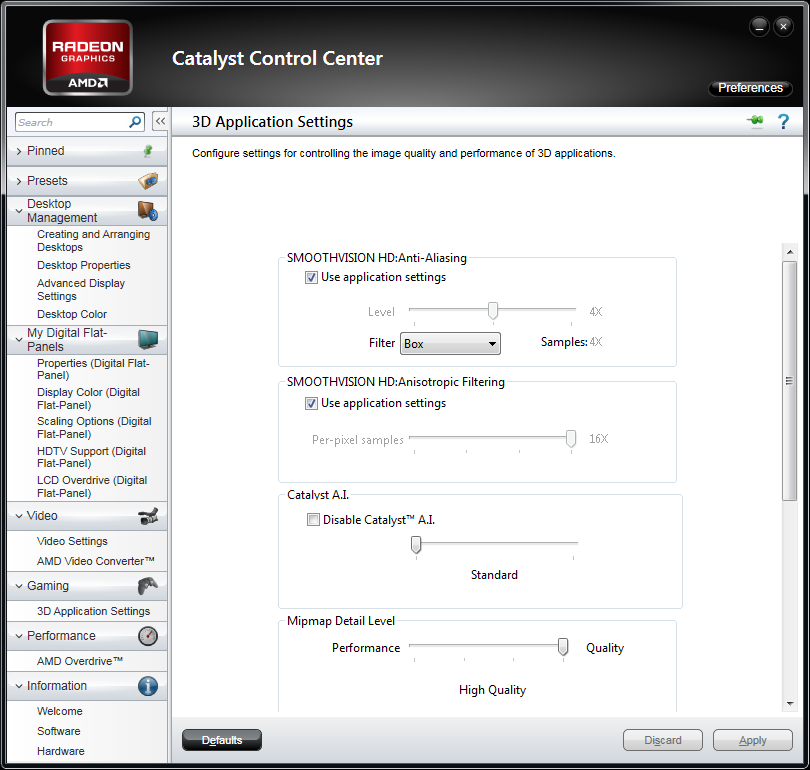Originally posted by Doodzor
View Post
Announcement
Collapse
No announcement yet.
KDE Developers Come Up With DWD Window Decoration Concept
Collapse
X
-
I've installed both fedora and opensuse on several devices (htpc, notebooks, etc), several times in the pas few years, and it has always been more a pain to set up codecs and the likes on fedora.Originally posted by Awesomeness View PostOn Fedora you have to enable RPMFusion's repo, under openSUSE PackMan's. There is no practical difference.
Maybe their is no theoretical difference, but there sure is a practical difference.
(Maybe I'm doing it wrong, but that still counts as an argument for lower usability).
Comment
-
I take it you didn't actually read the post before complaining about it? The things you're complaining about are all discussed in detail in the post, and in short, you're completely wrong. The entire purpose of this 'DWD' concept is that everything is still system-rendered - the app just provides hints requesting extra elements be added to the title bar.Originally posted by uid313 View PostApplications will look, feel, and behave unpredictably.
Applications will feel alien, and not blend in and integrate with the rest of the system.
This causes confusion and decreases usability.
But even if you were right - how would that differ from now? Applications have always been able to opt out of having the window-manager decorate their windows, providing some client side equivalent instead. Apps like XMMS are the classic example of that... and yet, they're really not common. Most apps just go with the standard SSD model - if nothing else, because doing anything else is more work.
Comment
-
My biggest argument against CSD.
Here is the biggest problem (from my point of view):Originally posted by xeekei View PostI don't see the problem with CSD.
In a system like MS Windows, CSD works fine, because there is a single window manager that everyone uses. The user cannot even replace the WM with something else of their choice. This means that there is consistency -- every installation of Windows looks and acts the same. This means that developers of Windows applications know what to expect of their users' systems, and how to make their applications look good and consistent in that environment. In fact, the Windows experience is pretty much defined by its history of CSD applications. Windows users expect every application they install to have its own unique look but still have the same consistent feel in the form of common UI features like minimize/close buttons.
However, the same is not true of Linux systems (or anything in the open-source world for that matter). People write their own WMs and users choose between a number of different WMs to install, to install whatever makes their computer work the way they think works best for them. Everyone's Linux system works and acts differently. Sure, there are many common DEs like KDE or Unity or GNOME which are used by relatively large numbers of people, but no single one of those covers all Linux users. All of those look, feel, and behave differently. Therefore, application developers cannot make assumptions about the look and feel of their users' systems, like they do on Windows. This means that if developers choose to draw their own window decorations, it becomes virtually impossible to do so in a way that looks and acts nicely for all users.
I will use myself as an example. I use the i3 tiling/dynamic window manager. I don't have (or want) close/minimize/maximize buttons in my titlebars. In fact, I don't have any titlebars at all wasting my screen space. Most current-gen applications work just fine for me (as they are designed to work with SSD and therefore allow my WM to handle decorating (or not) my windows). Applications like Steam are very big offenders. Steam really pisses me off with its CSD which includes traditional close/minimize/maximize buttons in the top right corner (the maximize/minimize buttons are not even functional, as my WM does not have that functionality (and I don't want that functionality)). This makes Steam look and feel very foreign, with UI elements which do not even work/apply to my system. I would hate it if more applications start enforcing their idea of how I should manage my windows onto me. I want to enjoy the freedom and flexibility that using a FOSS operating system gives me.
tl;dr: How to manage your windows / use your GUI applications is something that different people like to do differently. CSD takes away the flexibility that users have with configuring their desktop by the means of different window managers.
Comment
-
Of course you don't see a problem when you never had Gingerbread, Holo, and now Material Design apps on the same device?Originally posted by xeekei View PostAndroid apps have a unified look. At least these days. People will try to make their app blend in if you recommend it for them. DWD sounds neat, but I don't see the problem with CSD.
Comment
-
Originally posted by Doodzor View PostOpenSuse has a special repo just for proprietary Nvidia drivers which you can enable with a check box. And one-click installers for proprietary codecs. Enabling RPMfusion in fedora doesn't automatically do all this. You still need to pull down what you want from there.But Fedora has https://kororaproject.org/about which is to Fedora kind of what Mint is to Ubuntu: A remix that accesses the original repos for software and updates but has additional repos like RPMFusion enabled by default and MPEG codecs are also already installed. On top of that, Korora also has a driver maganger similar to Ubuntu (in fact the first incarnation was a port of Ubuntu's): https://kororaproject.org/about/news...ent-for-jockeyOriginally posted by erendorn View PostI've installed both fedora and opensuse on several devices (htpc, notebooks, etc), several times in the pas few years, and it has always been more a pain to set up codecs and the likes on fedora.
Maybe their is no theoretical difference, but there sure is a practical difference.
(Maybe I'm doing it wrong, but that still counts as an argument for lower usability).
For total newbies Korora is what I recommend these days and also more advanced users (like myself) may appreciate their defaults for convenience reasons.
Comment
-
Except that's not true:Originally posted by tajjada View PostIn a system like MS Windows, CSD works fine, because there is a single window manager that everyone uses. The user cannot even replace the WM with something else of their choice. This means that there is consistency -- every installation of Windows looks and acts the same.



Comment
-
Did you even read the rest of my post?Originally posted by Awesomeness View PostExcept that's not true:
in particular, this:
All of the applications in your screenshots fit what I said perfectly. They have their own unique look (expected by users) but they have minimize+close buttons in the top right corner and something resembling a titlebar / a title near the top of the window, which are UI features that Windows users expect.In fact, the Windows experience is pretty much defined by its history of CSD applications. Windows users expect every application they install to have its own unique look but still have the same consistent feel in the form of common UI features like minimize/close buttons.
What I really meant with my comment about the single WM was consistency between installations (every user's Windows system is the same) as opposed to consistency between applications (every application is the same). That was part of my argument.
Please read the rest of my post.
Comment


Comment